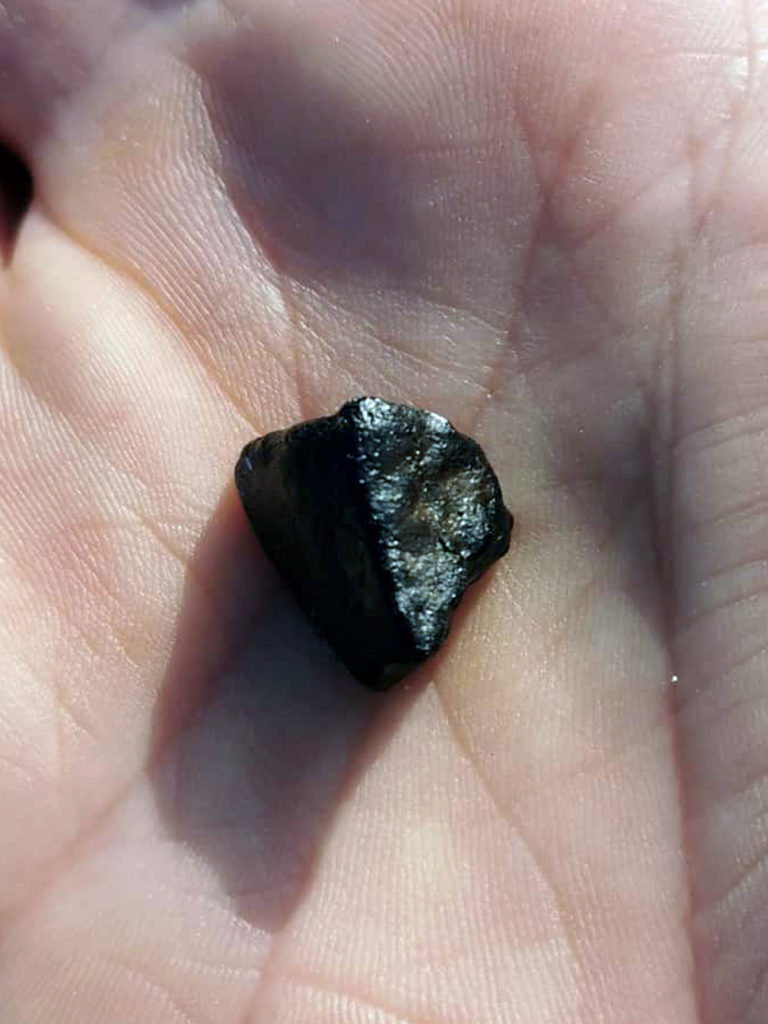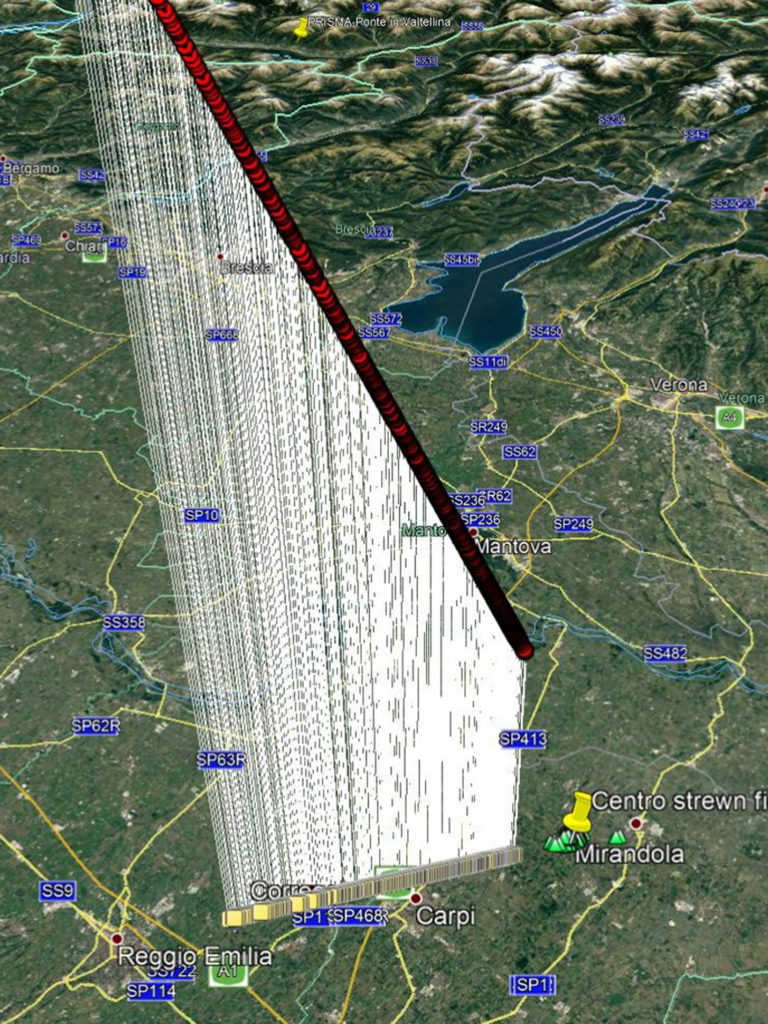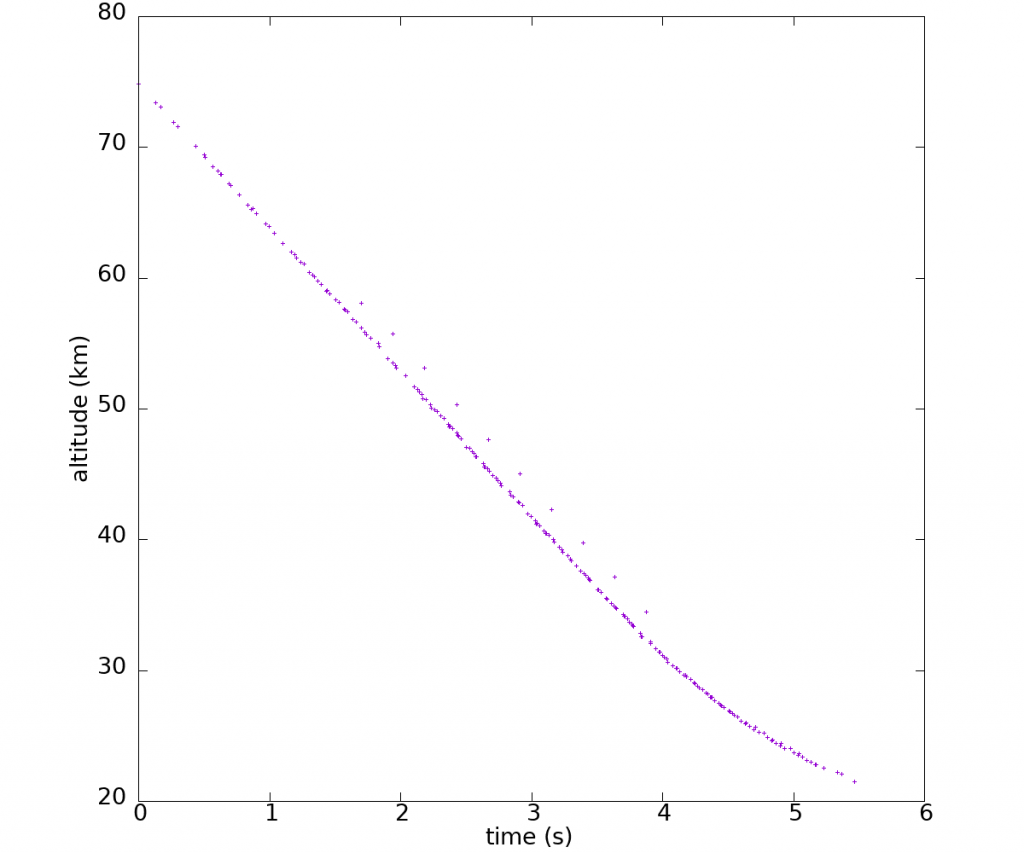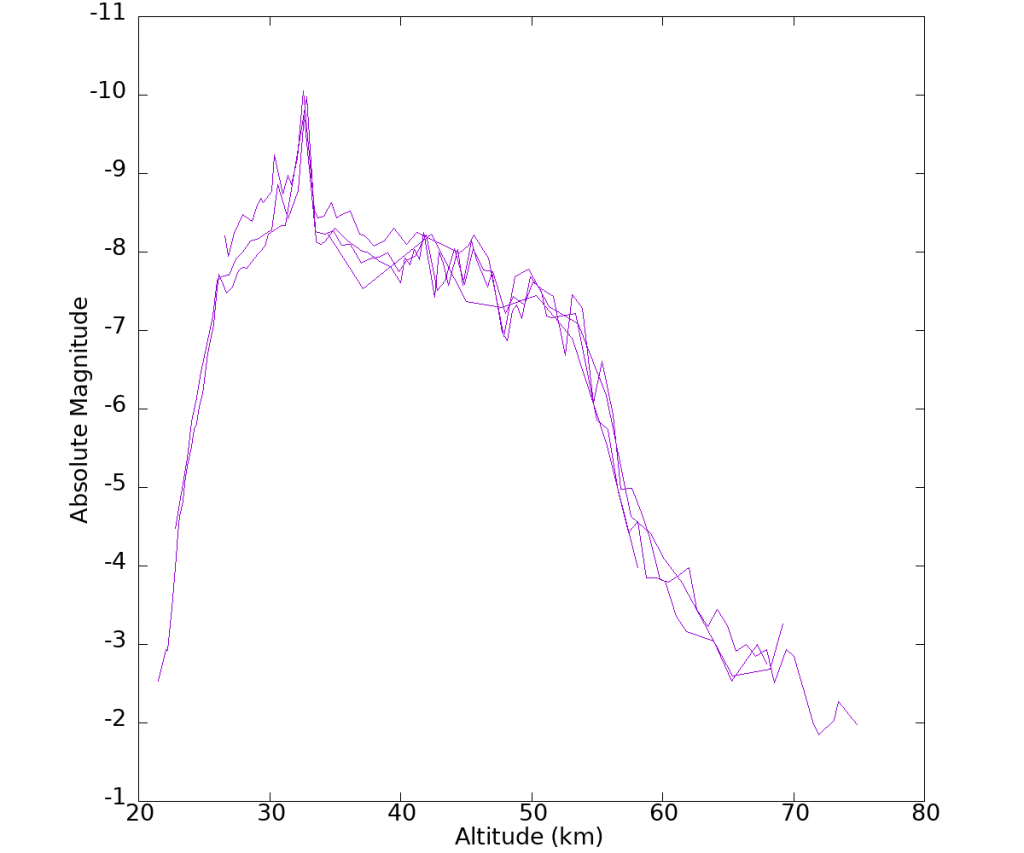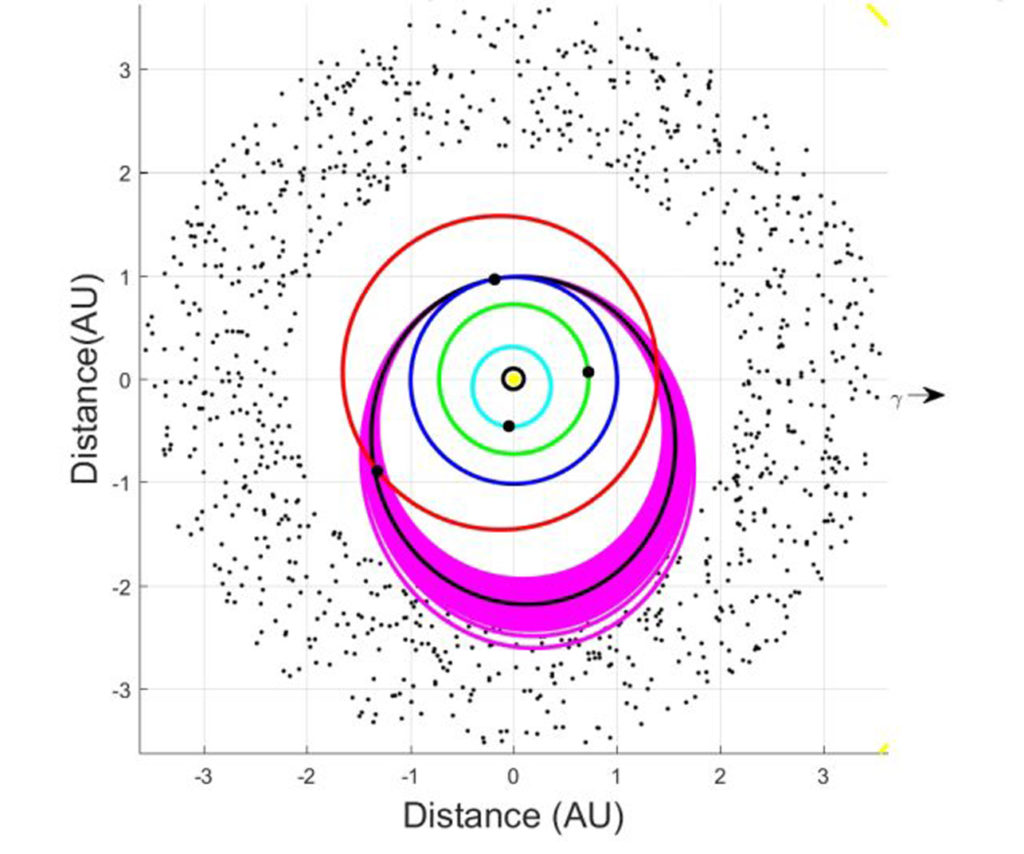CAVEZZO – Meteorite fragments (L5-an, S2, 55.3 grams) found near Ponte Motta (Cavezzo) / Fall on 1 January 2020, 18:26:52.9-58.5 UT, Rovereto sul Secchia, Modena, Emilia-Romagna, Italy
Last update: 23 June 2021
The ordinary chondrite (L5-an) meteorite fragments were found by 48-year old warehouseman and cyclist Davide Gaddi from Mirandola in the grass next to a path on the bank of the Secchia at location 44°49’43.7″N, 10°58’19.5″E near Ponte Motta (Cavezzo) at a few minutes past 2 p.m. on 4 January 2020 while walking his dog. His dog Pimpa found and sniffed the small tetrahedral meteorite (3.1 g) in the grass. Gaddi went to the spot and picked up the specimen. Then he remembered the photos of meteorites he had seen in the local media. He put the fragment in a plastic bag and at 3.02 p.m. sent an e-mail message and some photos of the find to PRISMA (Prima Rete Italiana per la Sorveglianza sistematica di Meteore e dell’Atmosfera) via email. Then the battery of his mobile was empty.
“Salve. Ritrovato questo frammento in zona Disvetro_Rovereto sul Secchia in provincia di Modena. Dalle descrizioni si avvicina a un frammento di meteorite… O sbaglio?” (Davide Gaddi)
Alberto Buzzoni from the Project Office of PRISMA read Gaddi’s message and tried to phone him but could not reach him. Buzzoni wrote him an e-mail message instead. Meanwhile Gaddi went on walking back to his car in order to recharge the battery of his mobile phone and suddenly found the larger fragment (52.2 g) in the grass a few meters away. After Gaddi had read Buzzoni’s e-mail at around 4 p.m. he phoned PRISMA, told them about the circumstances of his finds and was told to meet Romano Serra (University of Bologna, curator of the collection of the Museum of S. Giovanni in Persiceto) who was inspecting the calculated strewn field near the Disvetro cemetary. There Serra eventually confirmed the meteoritic nature of Gaddi’s finds when he presented them to him. At around 4.46 p.m. Serra revealed towards Daniele Gardiol of INAF (Istituto nazionale di astrofisica) that fresh meteorites had been found. Gaddi has decided to donate the small mass to the Municipality of Cavezzo (Cavezzo Astronomical Observatory). It is planned to make three casts of the meteorite, one for the town of Cavezzo, one for the observatory Disvetro di Cavezzo and one for Gaddi. The small 3-gram specimen has been given to Giovanni Protesi and is being analysed and classified at the Dipartimento Scienze della Terra of the University of Florence. The analyses of the meteorites are being coordinated by Giovanni Pratesi (associate professor of Mineralogy at the University of Florence (Unifi)) in collaboration with Vanni Moggi Cecchi (curator of the Litho-Mineralogical Collection of the Museum of Natural History of the Museum System of Unifi and other scientists. The classification results were initially expected to be published from 1 February 2020. In general measuring the short-lived radio isotopes of this meteorite is strongly advised to guarantee that the found specimen is actually a specimen which fell on 1 January 2020, especially because it is an ordinary chondrite similar to those which have fallen in recent years. Measurements of the short-lived radio isotopes on the larger fragment at the National Institute for Astrophysics (INAF) in Torino, have reportedly been performed at the Monte dei Cappuccini Laboratory (IFSI, INAF). The search for more meteorites continued but none could be found. On 1 February a public meeting with Daniele Gardiol, Mario Di Martino, Albino Carbognani, Umberto Repetti, Romano Serra and Giovanni Pratesi at the Osservatorio Astronomico “Geminiano Montanari” in Cavezzo was held. On 5 September 2020 the confirmed fall was officially registered as Cavezzo (L5-an, S2, W0). On 11 June the large fragment of the Cavezzo meteorite was given to the Museo di Scienze Planetarie di Prato. In May 2021 the National Institute of Astrophysics (INAF) and Piccolo Teatro d’Arte in Turin began production of a 30-minute documentary about the meteorite fall.
Giovanni Pratesi, Vanni Moggi Cecchi, Richard C. Greenwood, Ian A. Franchi, Samantha J. Hammond, Mario Di Martino, Dario Barghini, Carla Taricco, Albino Carbognani, Daniele Gardiol
Meteoritics & Planetary Science
Version of Record online: 23 June 2021
Cavezzo, the first Italian meteorite recovered by the PRISMA fireball network. Orbit, trajectory, and strewn-field
D. Gardiol et al. / Monthly Notices of the Royal Astronomical Society, Published: 21 November 2020
original unedited manuscript (OPEN ACCESS)
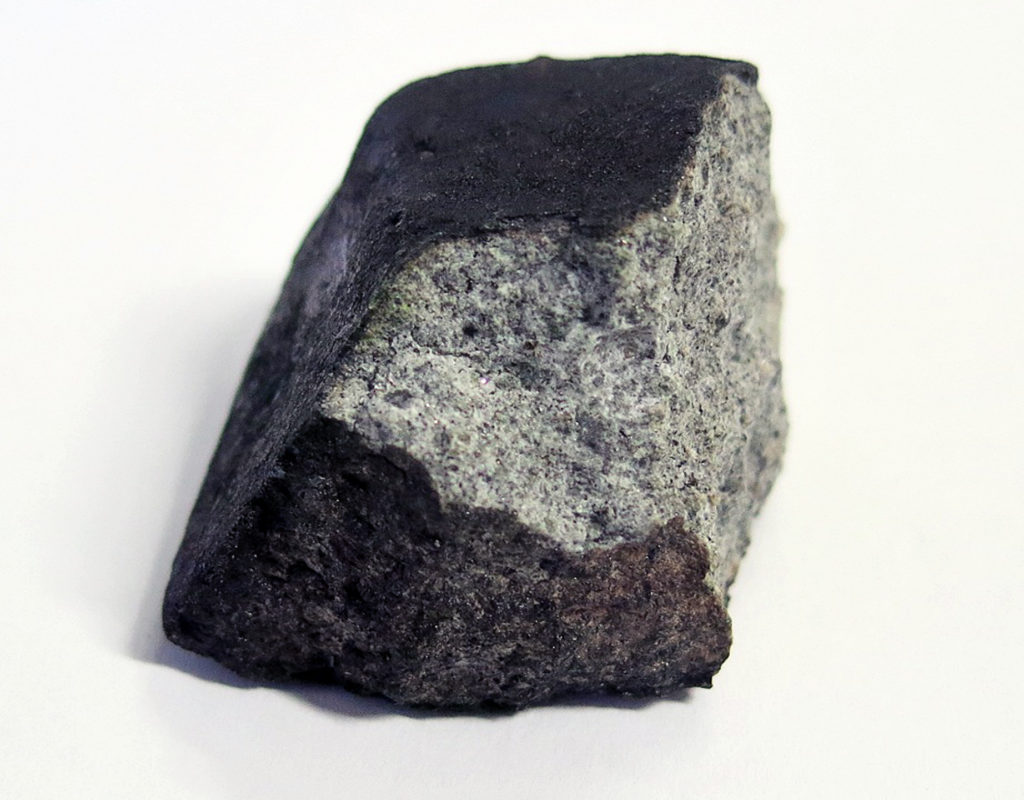
The large fragment. Photo: PRISMA/FRIPON
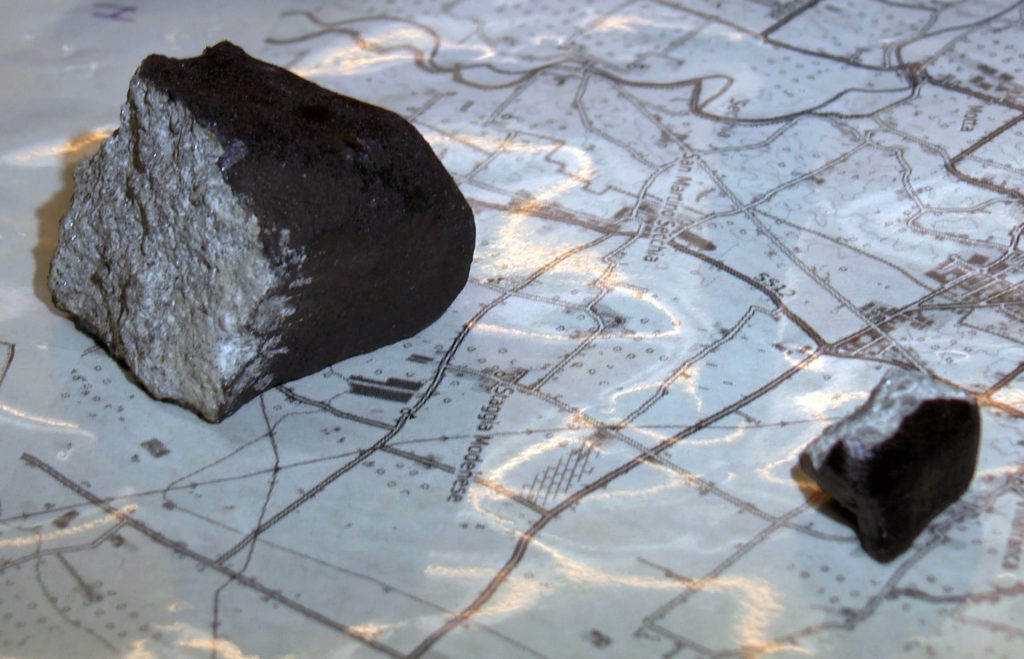
The larger fragment (~ max. 4 x 4 cm) next to the smaller one (~3 g). Photo: INAF

Photo: INAF

Photo: INAF
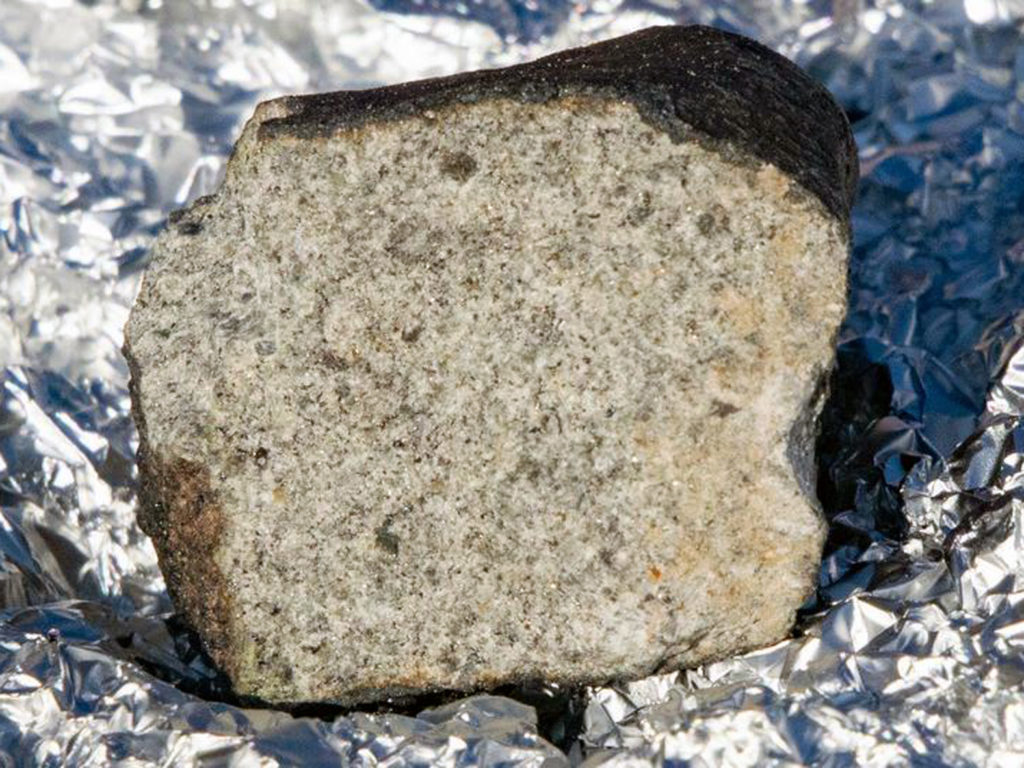
The seemingly chondritic lithology of the larger meteorite. Photo: Gazzetta di Modena
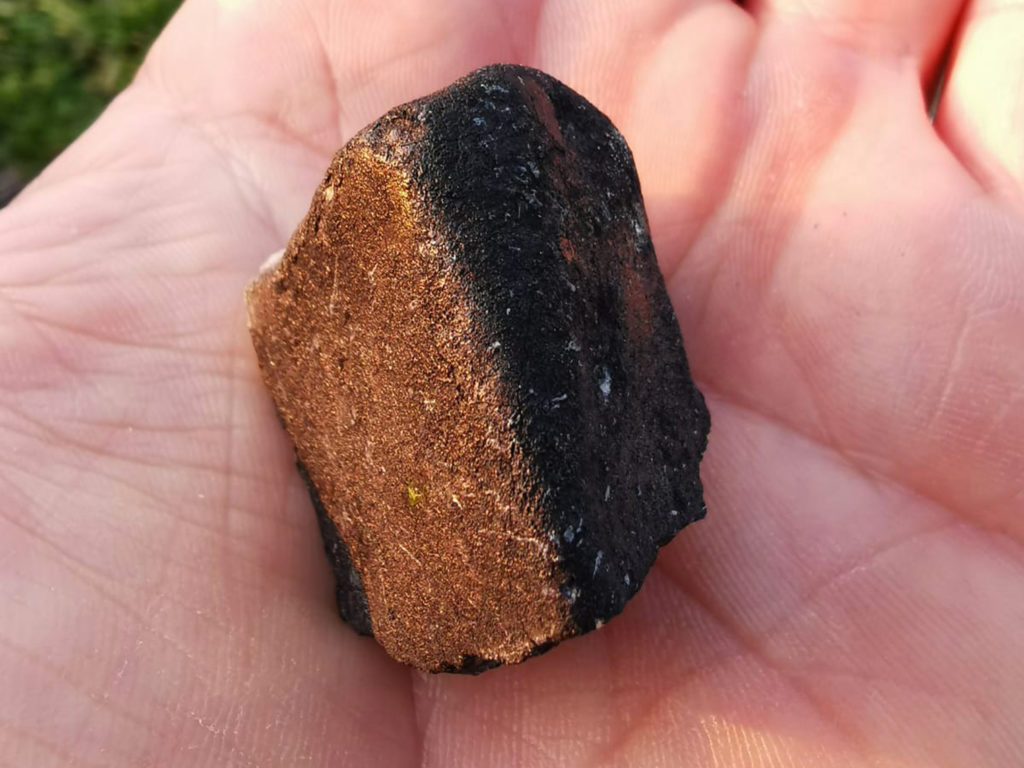
The second find (~52 g). Photo: Davide Gaddi
Interview with Romano Serra. Video: MEDIAINAF TV (4 January 2020)
Interview with finder Davide Gaddi near the find location. Video: Sul Panaro (5 January 2020)
A short video about the ongoing analyses of the meteorite fragments. Video: Università degli Studi di Firenze (20 January 2020)
Bolide and preatmospheric orbit
On 2 January PRISMA and INAF published the first trajectory analysis of the bolide (IT20200101T182654) which had been been captured by eight PRISMA cameras (Asiago, Padova, Bedonia, Rovigo, Felizzano, Loiano, Cecima and Navacchio). The 59-kilometre long luminous trail of about 5.6 seconds with an azimuth of 238.1° ± 0.2 was recorded from a height of 75.9 ± 0.2 km above the ground with a steep entry angle of about 68.4° ± 0.3 relative to the horizontal. The entry velocity was calculated to be as low as 12.2 ± 0.2 km/s. The bolide reached a brightness of a magnitude down to -9.5 ± 0.5 during its main flare at a height of 32.6 km (a second flare occured at 30.7 km with a magnitude of -8.5). The bolide was recorded down to an altitude of 21.5 ± 0.1 km with a terminal velocity of 4.0 ± 0.2 km/s . The entry mass of the meteoroid was calculated to be about 3.5 ± 0.8 kilograms and the main fragmentation events were at heights of about 50 and 32 kilometers. The origin of the meteoroid has apparently been calculated to be from the inner asteroid belt. The final calculated total mass which could have reached the ground is reported to be about 1.5 ± 0.4 kilograms which is questionable.
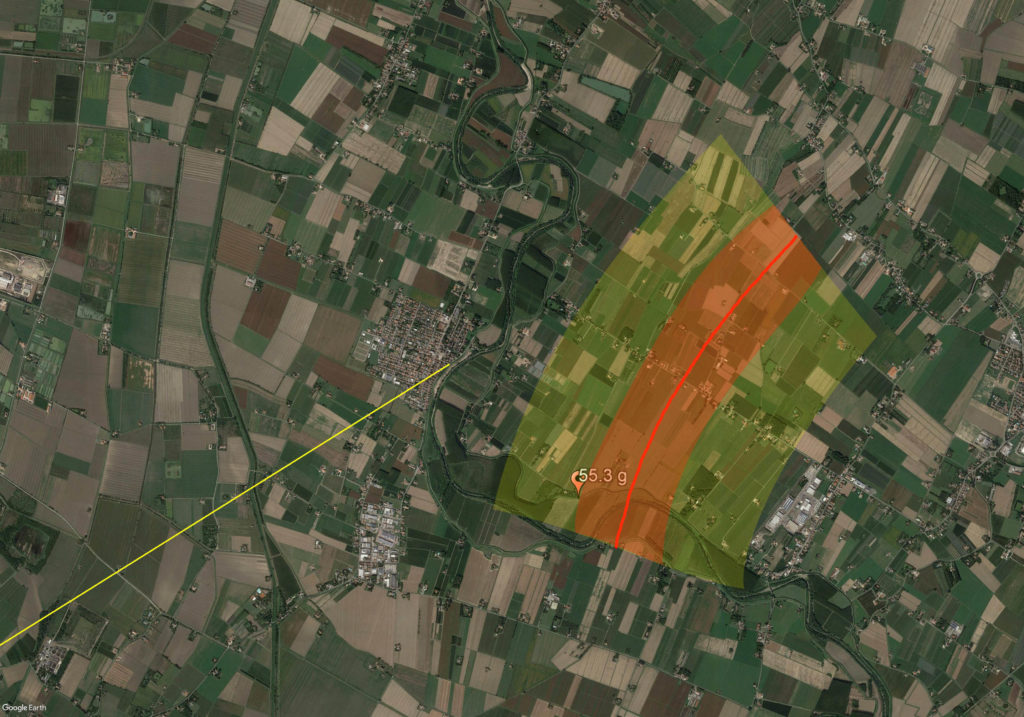
Calculated fall zone for the Cavezzo meteorite fragments, as a function of different mass-section ratio values from 30 up (south) to 200 kg m-2 (north-east) . The red line shows the nominal impact point and the shaded areas enclose 1σ (red) and 3σ (yellow) uncertainties in the transverse direction. The red marker shows the find location of the two Cavezzo fragments. The yellow line plots the terminal part of the luminous trajectory, projected onto the ground. Image: karmaka, based on Gardiol et al. (2020)

The trajectory of the luminous trail (projected onto the ground) and the find location of the meteorite. Image: karmaka, based on Gardiol et al. (2020)
Orbital Data (J2000.0)
| a (AU) | 1.82 ± 0.22 | ω (°) | 179.2 ± 4.8 |
| e | 0.460 ± 0.063 | Ω (°) | 280.52311 ± 0.00001 |
| q (AU) | 0.983 ± 0.001 | i (°) | 4.0 ± 1.6 |
| Q (AU) | 2.66 ± 0.41 | Period Y |
Q = Aphelion, q = Perihelion, a = Semi-major axis, e = Eccentricity, i = Inclination, Ω = Ascending node longitude, ω = Argument of perihelion

The reconstructed heliocentric orbit for the meteoroid of the Cavezzo meteorite (yellow ellipse) with uncertainty band (within the two turquoise orbits) as seen from the ecliptic north pole and projected onto the ecliptic plane. Image: karmaka
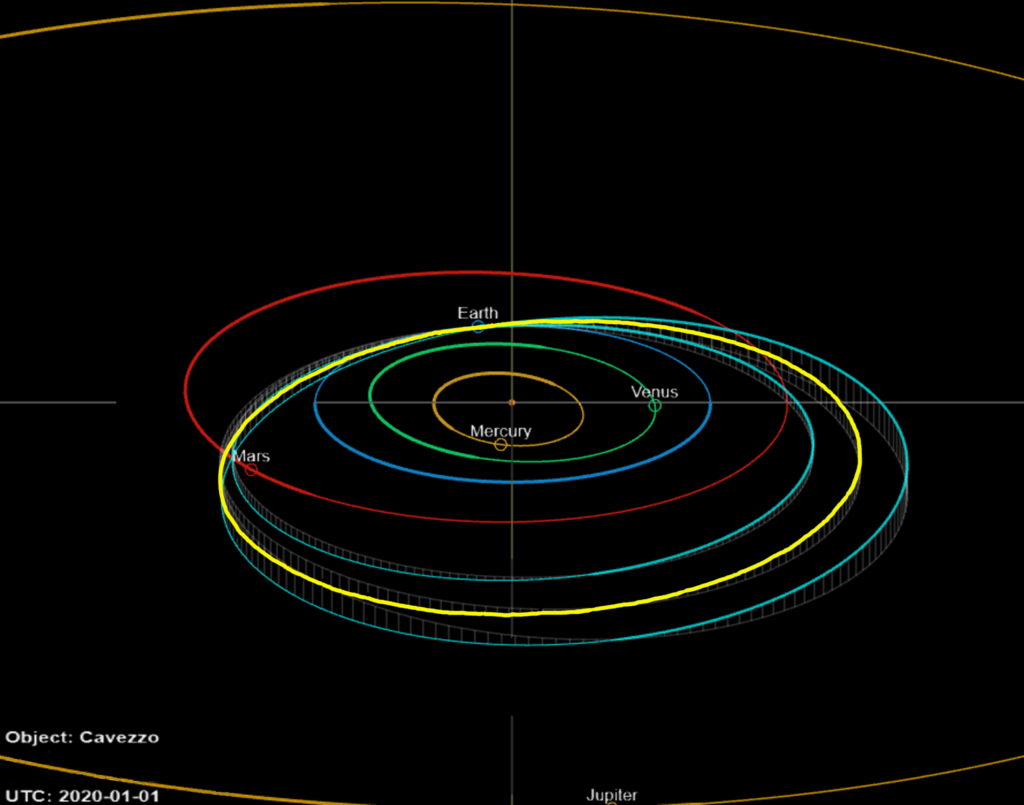
The reconstructed heliocentric orbit for the meteoroid of the Cavezzo meteorite (yellow ellipse) with uncertainty band (within the two turquoise orbits) as seen from the ecliptic north pole. Image: karmaka
Bolide recorded by the camera of the CuneoAAB station of the Associazione Astrofili of Bisalta. Video: STV

The bolide (in slow motion) recorded by the PRISMA camera LOIANO ITER01, which had been set up only about one month before. Video: Prisma
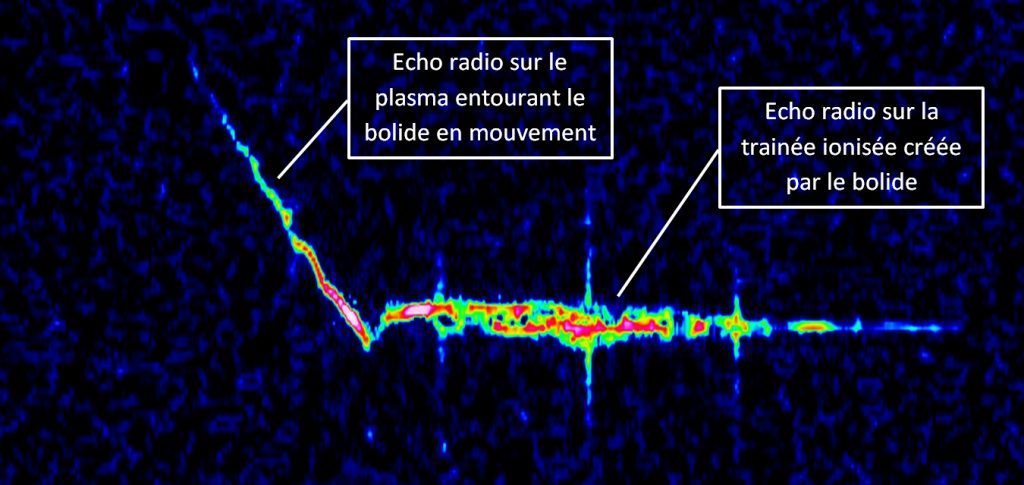
Radio detection of the bolide captured by the FRIPON radio station of Zicavo on Corsica. Graph: FRIPON / Vigie-Ciel
Media
Il Bolide di Capodanno by Daniele Gardiol in Coelum Astronomia (241 (2020), pp. 34-43)
I due bolidi di Capodanno (1 January 2020)
Una meteorite in Emilia-Romagna!? (2 January 2020)
Forse è caduta una meteorite in Emilia-Romagna (2 January 2020)
Trovati frammenti della meteorite di Capodanno (4 January 2020) Così io e la Pimpa abbiamo trovato il meteorite (5 January 2020)L’ultimo fuoco di Capodanno
(Radio3 Scienza, 7 January 2020)
Interviews with Davide Gaddi, Daniele Gardiol and Mario Di Martino
Video: Sul Panaro (5 January 2020)
Video: TV Qui (5 January 2020)
Video: Gazzetta di Modena (6 January 2020)
Video: La Stampa (6 January 2020)
Video: RAI3, TG Leonardo (6 January 2020)
Italie : des fragments de météorite retrouvés. Video: France 2 (8 January 2020)
Interview with Daniele Gardiol of the Astrophysical Observatory of Turin about the Cavezzo meteorite fall. (30 January 2021)

